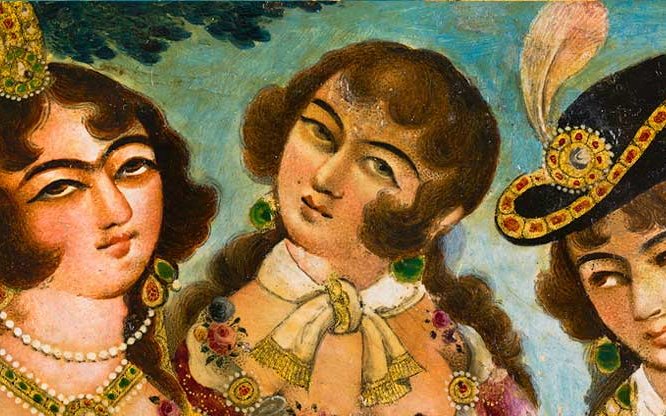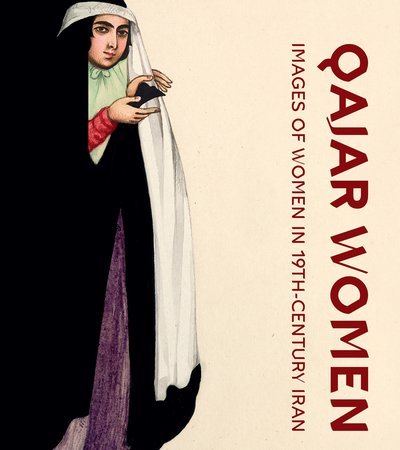Photographs of Qajar Women
Many new technologies were adopted under the rule of Nasir al-Din Shah (ruled 1848 to 1896). Photography became popular in Iran during the late Qajar period and was embraced enthusiastically by Nasir al-Din Shah, who famously photographed many of the women of the Qajar palace. During the period of his rule, the interaction between photography and painting grew, both in terms of style and composition.
Ideals of feminine beauty can change greatly over time. In the Qajar period, the paragon of female beauty was embodied in a woman with a thick monobrow (abru-ye peyvasteh) and moustache. For instance, the women of the Qajar ruler Nasir al-Din Shah's imperial harem used makeup to draw moustaches and connect their eyebrows if they did not already possess these striking features.
Women’s Worlds in Qajar Iran Digital Archive
This comprehensive database supervised by Dr. Afsaneh Najmabadi and hosted by Harvard Library features not just photographs, but artefacts and objects used by women in the Qajar era in their daily lives, as well as sound recordings of interviews with women who lived in the late Qajar period.
Qajar Women in Contemporary Art
In addition to the traditional art objects and photographs, a number of reproductions of contemporary artworks are also on display in Qajar Women, demonstrating the continuity of Qajar visual language.
The power of the Qajar female image is felt today, in the works of Hojat Amani, Shadi Ghadirian and Mahmood Sabzi, who adapt the iconic Qajar aesthetic to comment on modernity and femininity, as well as the role of the past in shaping the present.

